Science
for Life
for Life
Today, we share with you six stories about the legendary Russian scientists and engineers who changed our lives for the better – and those who carry on their mission today
All of our computers, smartphones, cutting-edge diagnostics and treatment methods – even the ChatGPT that everyone’s going on about today – couldn’t exist without fundamental science. Researchers around the world have done thousands of experiments and made hundreds of errors and dozens of incredible discoveries, all so we could use the devices we can’t even imagine our lives without now.
Russian scientists, too, made a massive contribution to these efforts. Today, on Russian Science Day, we invite you to look back on six examples of their inventions that have changed everyone’s lives. And then, we’ll find out what’s happening in their research fields today. ITMO University’s young scientists and students are, too, looking for improved treatments against cancer, developing new algorithms, and designing high-tech prostheses.
Pick a subject area to see how science
is changing the world for the better
is changing the world for the better
LASERS FOR EVERY PURPOSE
In 1964, one half of the Nobel Prize in Physics was given to two Soviet scientists: Nikolay Basov and Aleksandr Prokhorov "for fundamental work in the field of quantum electronics, which has led to the construction of oscillators and amplifiers based on the maser-laser principle."
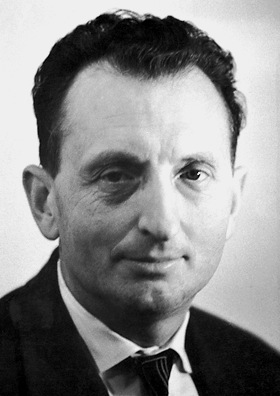
Aleksandr Prokhorov
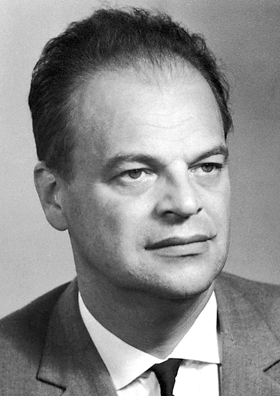
Nikolay Basov
Together, the scientists defined the key principles of quantum amplification and assembled the first microwave quantum generator, a maser (an acronym for “microwave amplification by stimulated emission of radiation”), based on a beam of ammonia molecules. Charles Hard Townes, who received the other half of the prize, conducted experiments with light, which is why what he developed was called a laser (for “light amplification by stimulated emission of radiation”).
Credit: wikipedia.org
Credit: wikipedia.org
These discoveries paved the way for quantum electronics, a brand-new branch of physics that gave us not only satellite communications, but also the more common fiber-optic cables that bring TV and internet to households worldwide.
Стоит отметить, что физический принцип работы этого устройства ― поглощение и испускание излучения молекулами ― еще в 1917 году объяснил Эйнштейн. Но довольно долго оно существовало лишь в теории. Басов и Прохоров смогли перевести теорию в практику. Они обнаружили, что неоднородное магнитное поле усиливает это излучение, и добились увеличения количества атомов в излучении.

Interestingly, it was Einstein who first explained the principles behind the maser (absorption and emission of radiation by molecules) back in 1917. Having thus existed as a theory until the second half of the century, this principle was brought into practice by Basov and Prokhorov. They discovered that an inhomogeneous magnetic field stimulates this radiation and succeeded in increasing the number of atoms involved in the process.
There’s hardly a field of science and technology that doesn’t employ lasers in some of their hundreds of modifications. And yet they still have a lot of potential – now, researchers around the world are looking for more interdisciplinary applications of lasers.
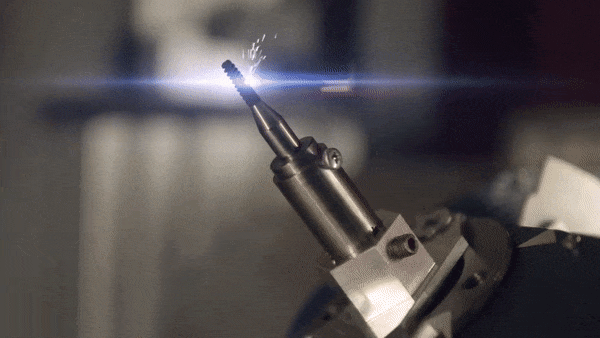
For instance, in collaboration with an industrial partner, scientists from ITMO have developed improved laser-processed dental implants. Another of the university’s science teams demonstrated how lasers can create actual works of art. Ekaterina Avilova, a PhD student at the university, is working on a technology that will be at the core of various devices, from chemical sensors to flexible electronics and theft-proof systems.
We use lasers to form copper images on substrates made from various dielectrics. In simple terms, our substrates can be glass, plastic, or a composite material; we process it with a laser and cover it with a special eutectic solvent. After that, we cover the substrate with glass, and then we can etch any micropattern onto it with a laser. Such micropatterns are widely used in electronics because copper is a great conductor – they are used in mother- and printed circuit boards for PCs and smartphones.
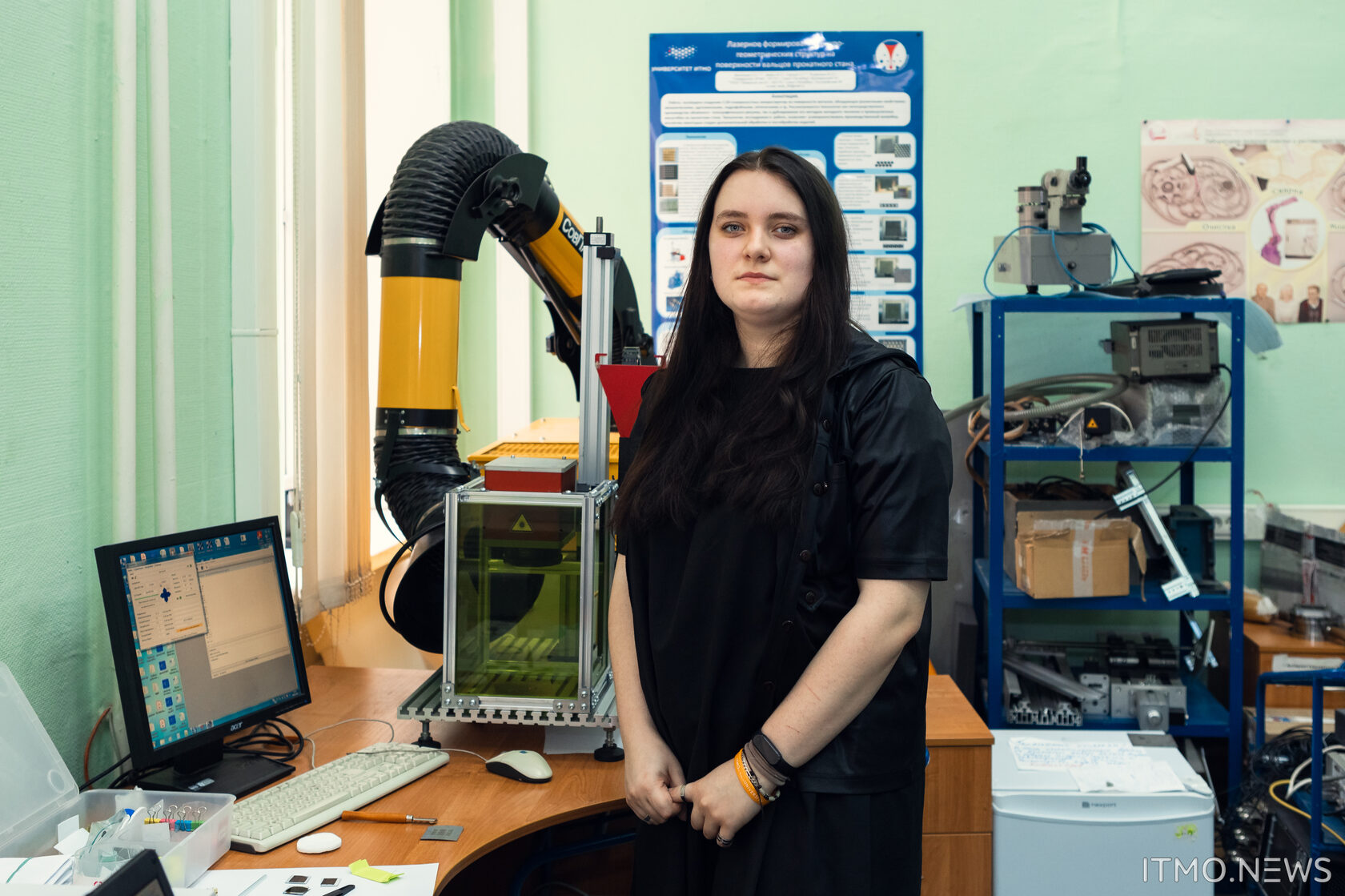
Ekaterina Avilova,
A first-year PhD student at ITMO’s Institute
of Laser Technologies
A first-year PhD student at ITMO’s Institute
of Laser Technologies
Importantly, this technology is eco-friendly, as well as quicker than its analogs, and presents us with many possibilities. For example, it allows us to create any kind of pattern, parts of which can be changed in the process without any additional technological steps or repetitions.
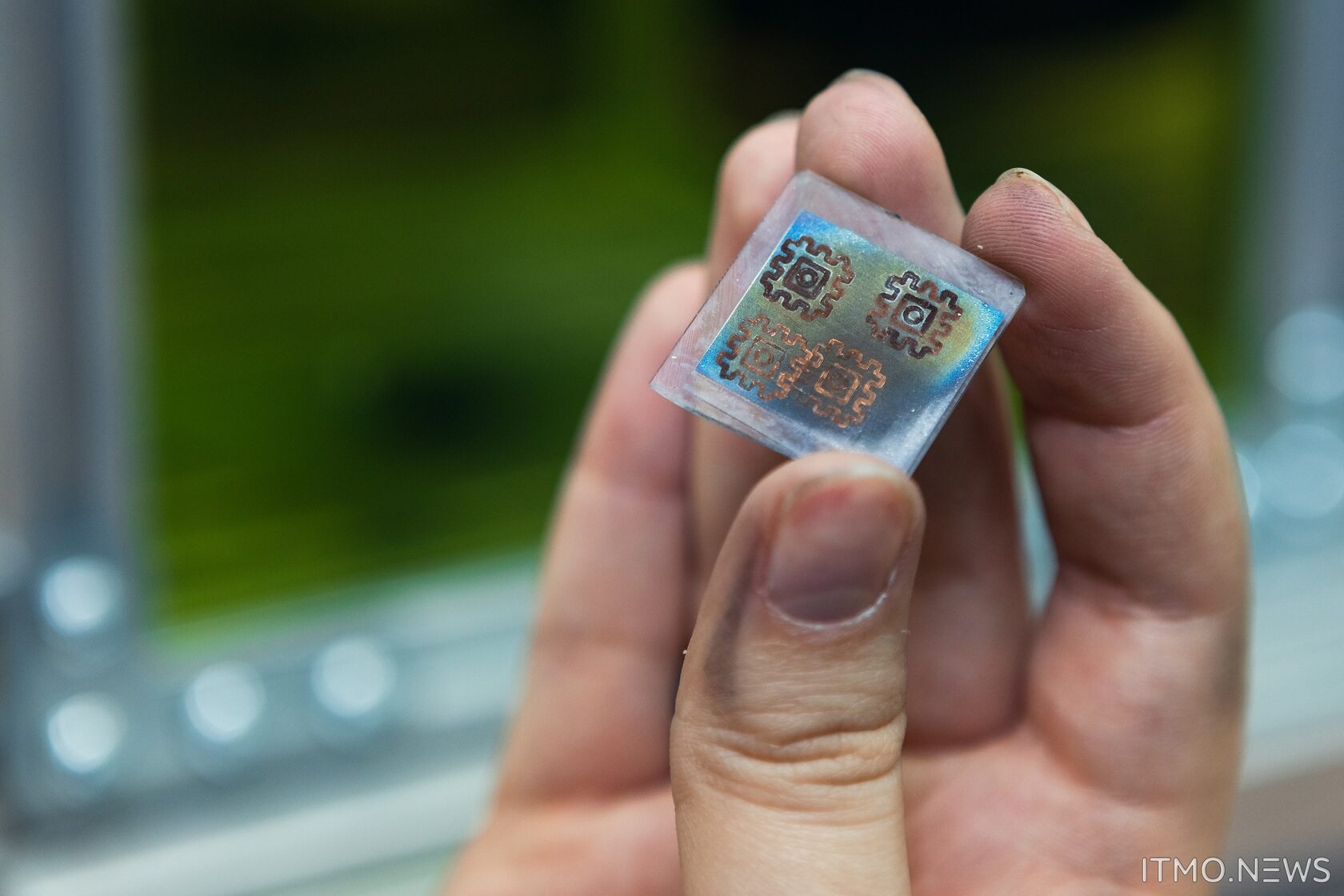
In the future, we will be able to produce theft-proof RFID tags with unique complex patterns, which would allow us to trace any product back to the store it was stolen from. Another application is in flexible electronics – like, say, wearable non-invasive blood sugar sensors for people with diabetes.

We are also collaborating with the Institute of Chemistry of St. Petersburg State University to develop simple chemically resistant sensors to detect organic elements. They will be able to help us identify the presence and estimate some quantitative parameters (mass, volume, number) of components, such as various proteins, in a medium. This analysis can be used to diagnose a number of illnesses.
I love that these days there are so many opportunities to apply your research. I consider myself a really down-to-earth kind of person, so I was never particularly inspired by working for the greater good. Before, I couldn’t understand why you would want to solve some fundamental problem, but over the course of my work I discovered that there are many specific applied tasks in science. For instance, you can look for ways to use a newly discovered material. I like that I make things in the lab that will go on to be used in practice. And it’s largely thanks to lasers that I found my way to applied research.
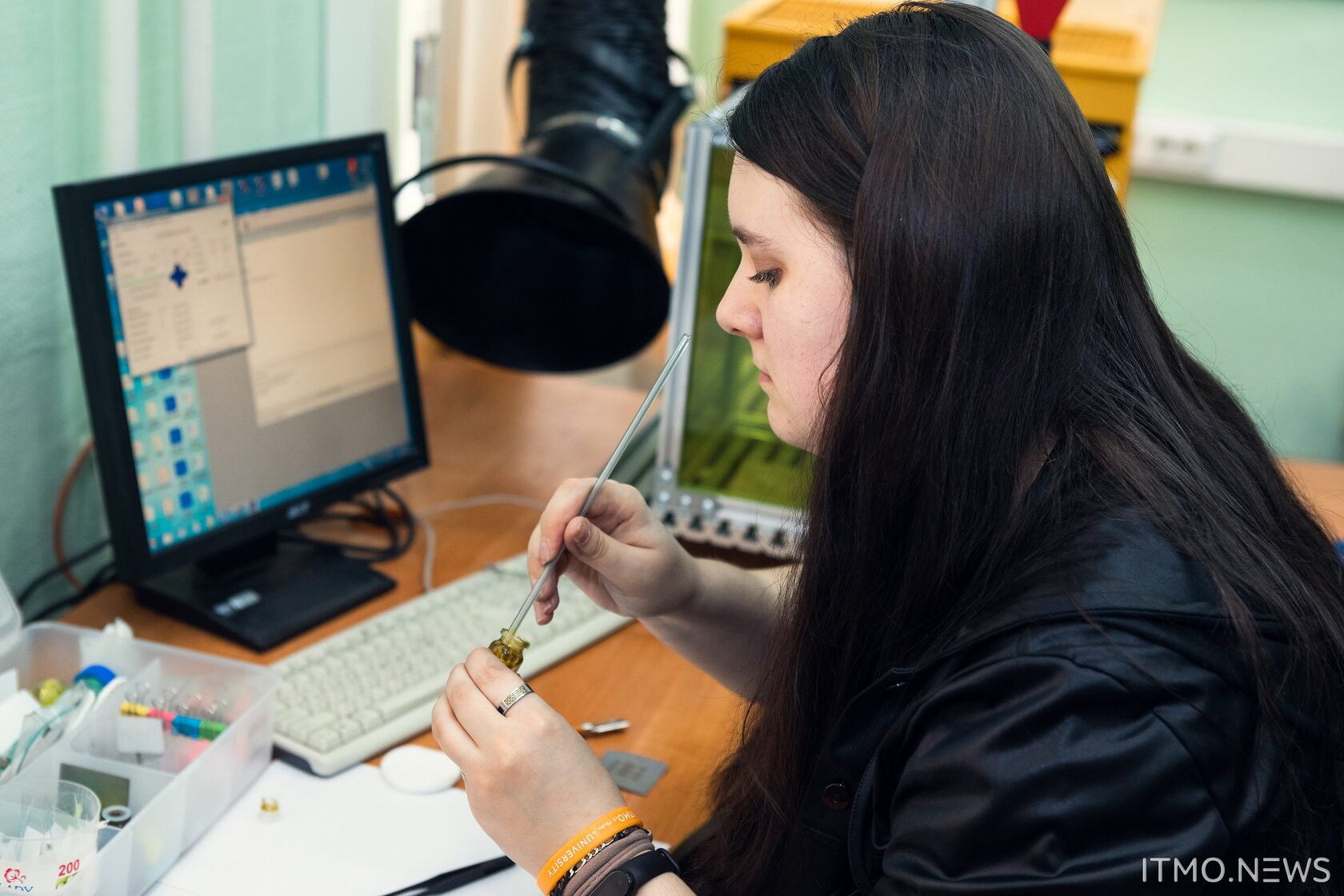
ELECTRONICS OF THE FUTURE
In 2000, the Nobel Prize in Physics went to yet another distinguished Russian scientist, Zhores Alferov, for “developing semiconductor heterostructures used in high-speed- and opto-electronics.” Behind this technical-sounding description lie discoveries that shaped the electronic devices we can’t imagine our lives without: mobile phones, CD players, optical fiber networks, and so on.


Zhores Alferov
Источник: СПбГЭТУ «ЛЭТИ» / etu.ru
Credit: St. Petersburg Academic University / spbau.ru
In essence, Alferov’s work laid the groundwork for a new era of electronics and digital technologies
Стоит отметить, что физический принцип работы этого устройства ― поглощение и испускание излучения молекулами ― еще в 1917 году объяснил Эйнштейн. Но довольно долго оно существовало лишь в теории. Басов и Прохоров смогли перевести теорию в практику. Они обнаружили, что неоднородное магнитное поле усиливает это излучение, и добились увеличения количества атомов в излучении.

Heterostructures in semiconductors represent the fusion of two chemically different semiconductors, with shifts occurring on the edge of the conduction band and the valence band. In the 1960s, researchers already understood that the creation of heterostructure-based semiconductors could have truly fantastic prospects, namely – making it possible to create genuinely powerful and yet compact devices. But one issue that couldn’t be solved for a long time was this: which semiconductors would be perfect for the task? Alferov’s achievement was in being the first to narrow it down – but it was far from his only feat in the field of optoelectronics.
Today, scientists seek out new ways to create cutting-edge electronics. One such technology are hybrid perovskites, a type of semiconductors that didn’t seem to be of any interest to researchers just 20 years ago – and certainly weren’t considered an alternative to silicon elements. But in recent years, these materials have caused a genuine revolution, especially in the solar power department. Research on this topic is done at ITMO, too – at the Laboratory of Hybrid Nanophotonics and Optoelectronics. To learn about the main findings researchers have made so far, let’s hear from Aleksandra Furasova.
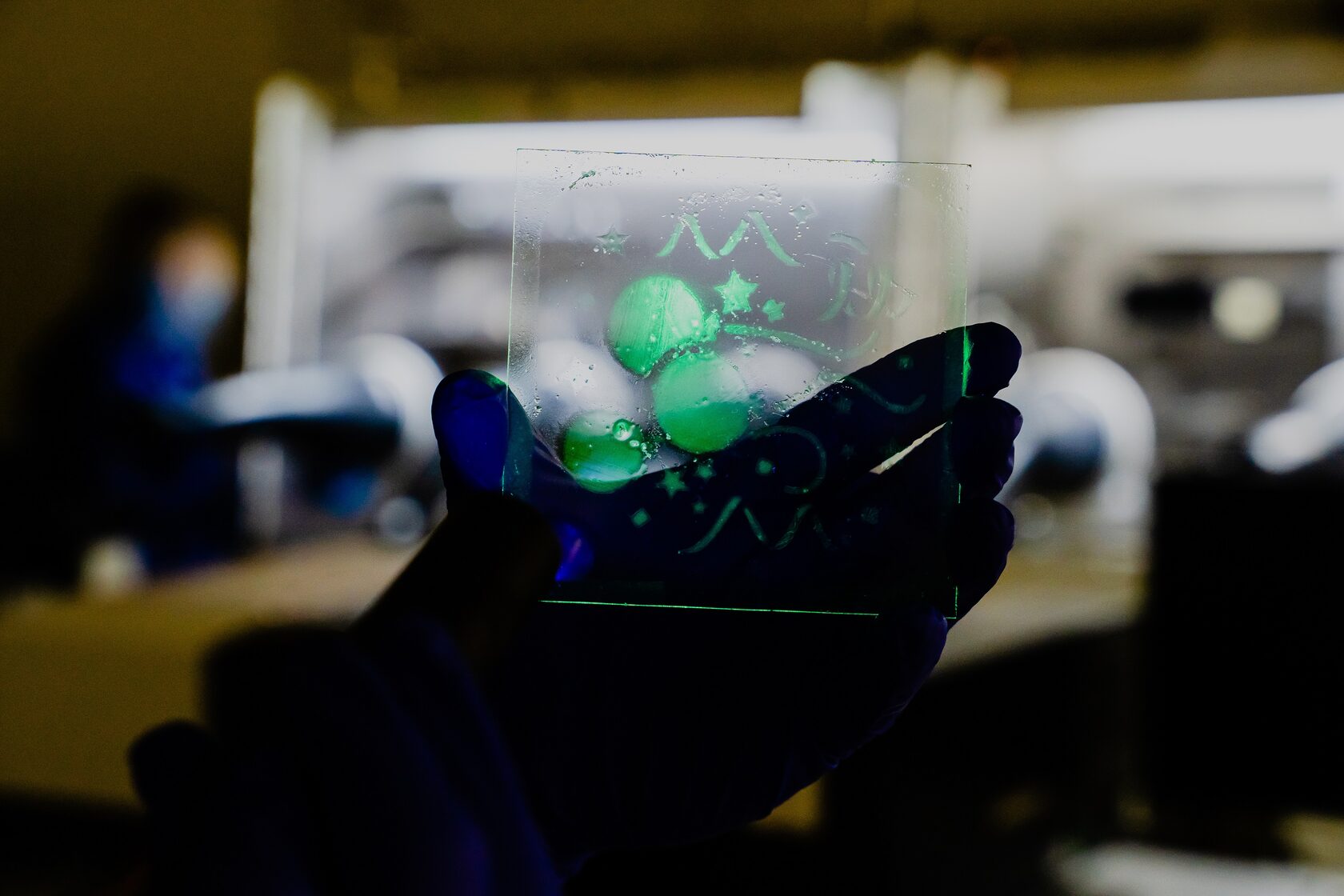
My research concerns solar energy:
I work on perovskite cells, which are essential elements of solar panels. The whole world is busy optimizing these kinds of devices right now, as they can be used to make simple, portable power sources for anything from phones and headphones to smart homes.
The perovskites we use are semiconductors with unique physical properties. For one, they’re very thin; you only need about 300-600 nanometers of perovskite film to create a converter that’s only one micron thick. Because of this, we can create thin solar elements with varying shapes and low weight.
I work on perovskite cells, which are essential elements of solar panels. The whole world is busy optimizing these kinds of devices right now, as they can be used to make simple, portable power sources for anything from phones and headphones to smart homes.
The perovskites we use are semiconductors with unique physical properties. For one, they’re very thin; you only need about 300-600 nanometers of perovskite film to create a converter that’s only one micron thick. Because of this, we can create thin solar elements with varying shapes and low weight.
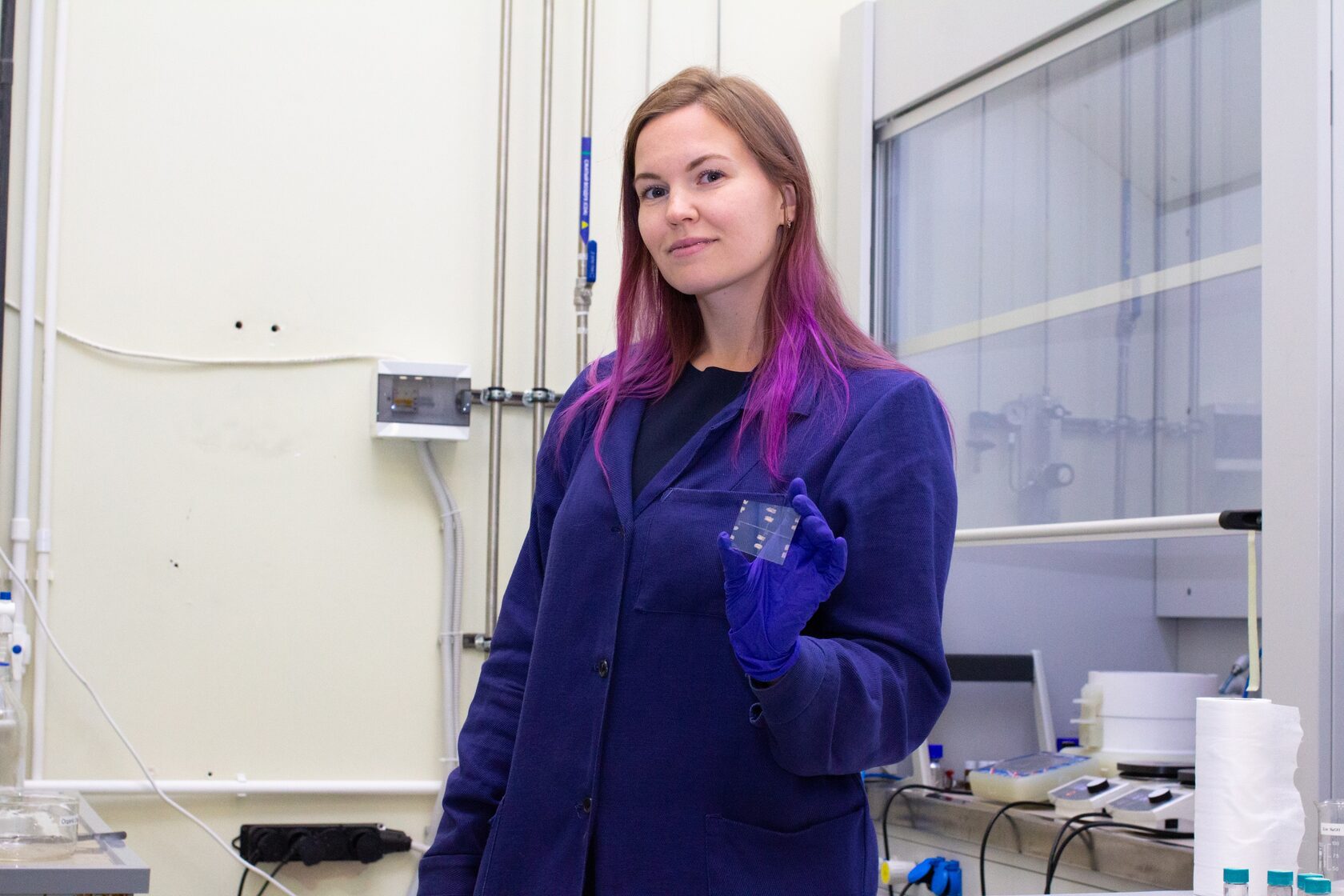
Aleksandra Furasova,
PhD in Physics and Mathematics; PhD in Electronics and Engineering;
junior researcher at the Faculty of Physics
PhD in Physics and Mathematics; PhD in Electronics and Engineering;
junior researcher at the Faculty of Physics
At ITMO, our goal is to improve the effectiveness of solar elements. We use the optical approach, meaning we add various optical nanostructures, resonant or scattering nanoparticles, or use microperforated surfaces to refract light. We control light on the nano-scale without increasing the weight or thickness of the elements. Thanks to this approach, we can replace existing silicon elements with more energy-efficient ones without an increase in cost. We’ve also been successful in increasing the effectiveness of light-to-energy conversion from 18% to 21%, which is considered a great result. At the same time, the maximum theoretically possible conversion rate for all solar elements with one photoactive layer is 33%.
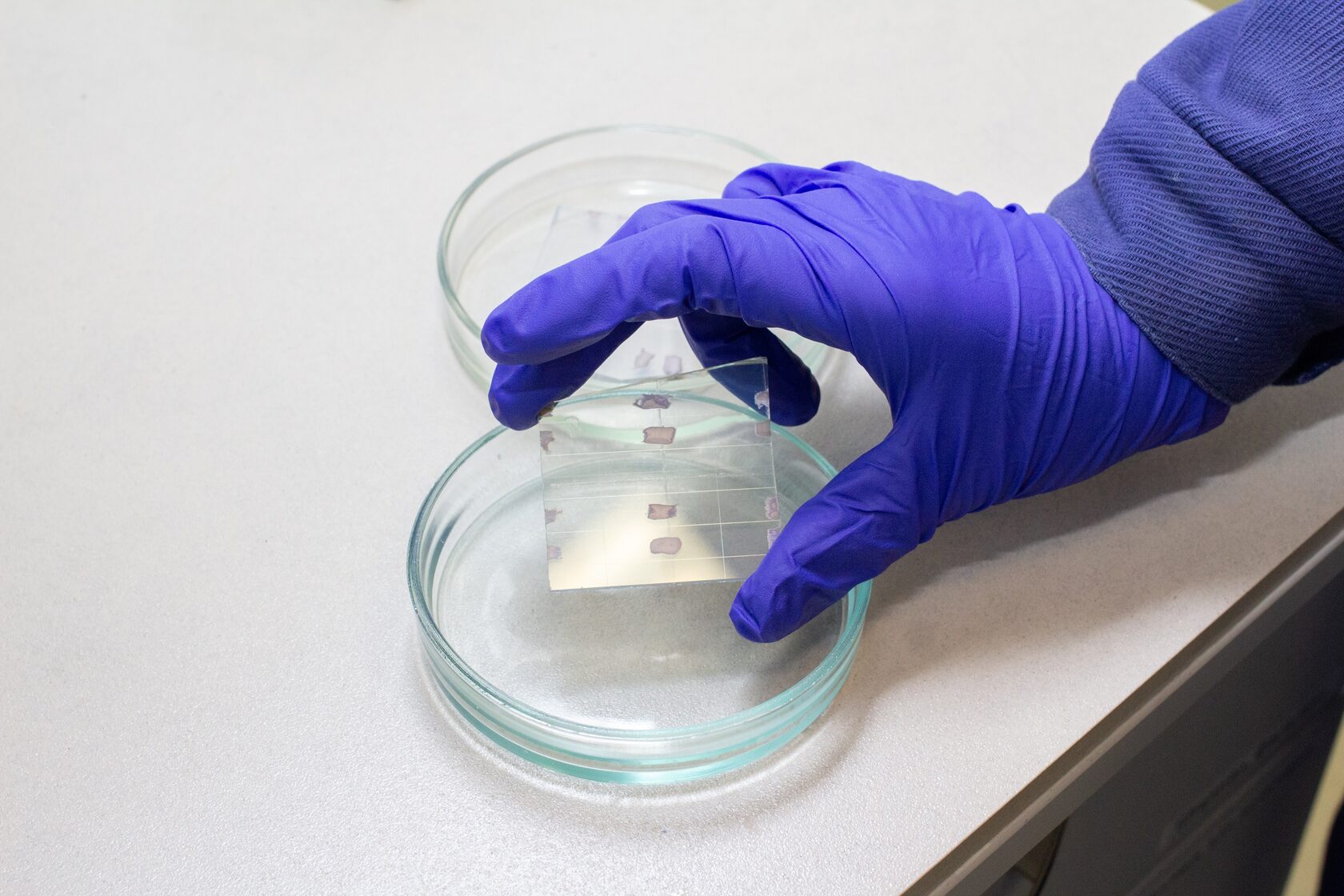
Today, there are a lot of new low-powered electronics: various sensors, such as those used in high-risk facilities, or smart locks and labels. These small devices don’t work well with cables – instead, we can use solar cells. A full-fledged development of the Internet of Things, too, isn’t possible without developing wireless power sources.
In addition, the use of perovskite solar elements allows us to produce electricity in places where there are lots of sunny days, but no ability to install power infrastructure – like in, say, deserts or mountains. Such devices could be useful for nomadic people (like the Berbers), who aren’t in a position to continuously collect the fuel needed to provide power.
Right now, we’re launching a project focused on the use of solar elements in the ionosphere. Perovskites aren’t affected much by ionizing radiation, which is why they are handy for the purpose. In addition, solar elements made with this material are relatively light – and the lighter the cargo, the less fuel you need and therefore the cheaper it is to send into space. Perovskite solar elements will be useful for the future development of space technologies, including in the production of drones and other light air- and spacecraft.
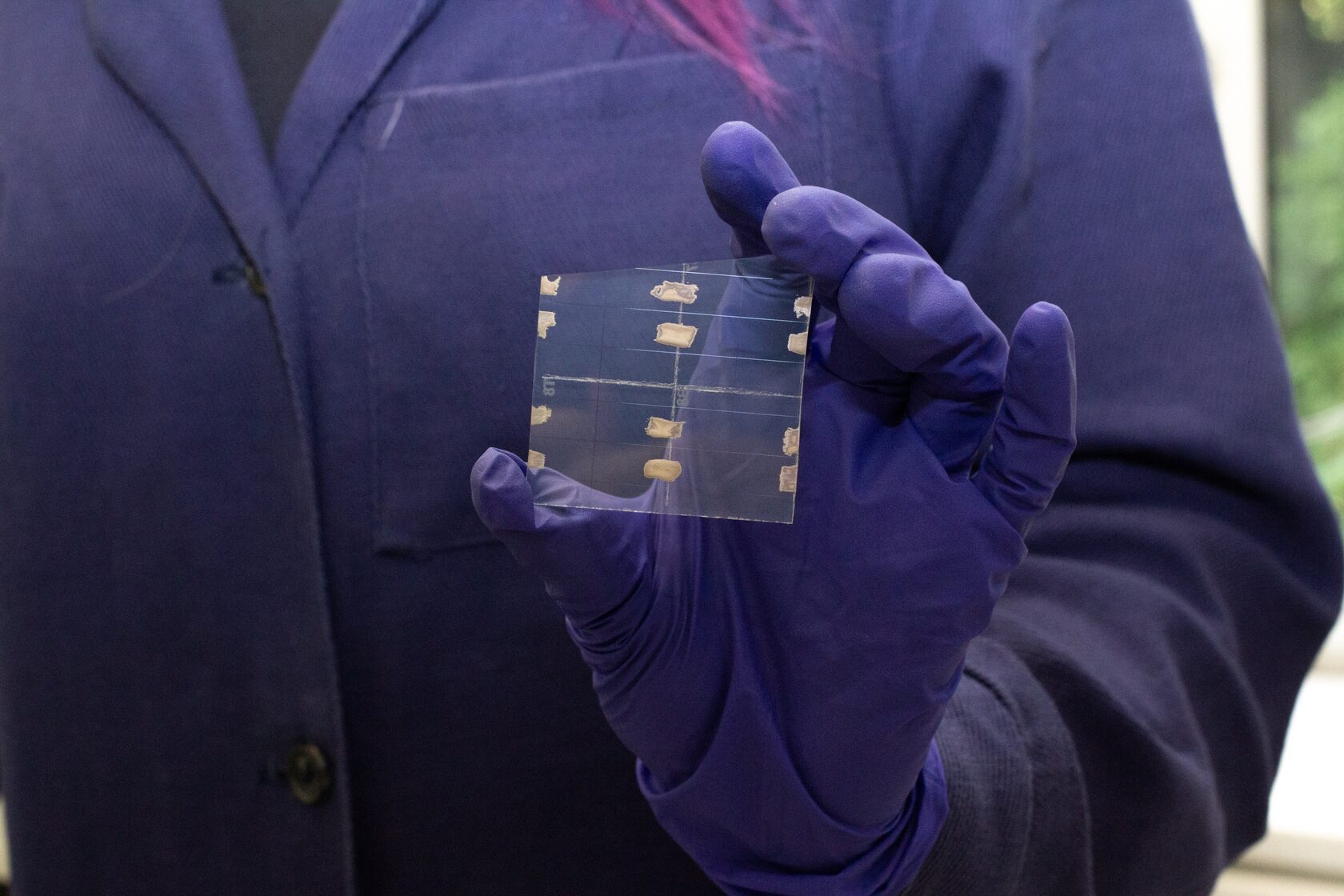
In school, I was into chemistry and biology and, for some time, even wanted to become a plastic surgeon. But once, there was a Science Day at school and we got a visit from the representatives of Dynasty Foundation – they would invite Russian-speaking researchers from around the world to give lectures for school students. I spoke to a scientist who, upon learning I was going into medicine, suggested I give science a try first. And so I did.
I work with physics because I love natural sciences. As strange as it may sound, but they’re all quite simple – there’s always a logic and a cause-and-effect relationship between things. And we, adults, always need a logical way to understand the nature of our world.
I work with physics because I love natural sciences. As strange as it may sound, but they’re all quite simple – there’s always a logic and a cause-and-effect relationship between things. And we, adults, always need a logical way to understand the nature of our world.

AI AND NEW ALGORITHMS
Many know of John McCarthy, the American scientist who gave the world the term “artificial intelligence” (among his other feats). It’s a lesser-known fact, however, that a whole community of AI researchers had formed in the Soviet Union around the time McCarthy was conducting his research in the US. One of its prominent members was Andrei Yershov, one of the pioneers of theoretical and systems programming, as well as one of the first Soviet programmers.
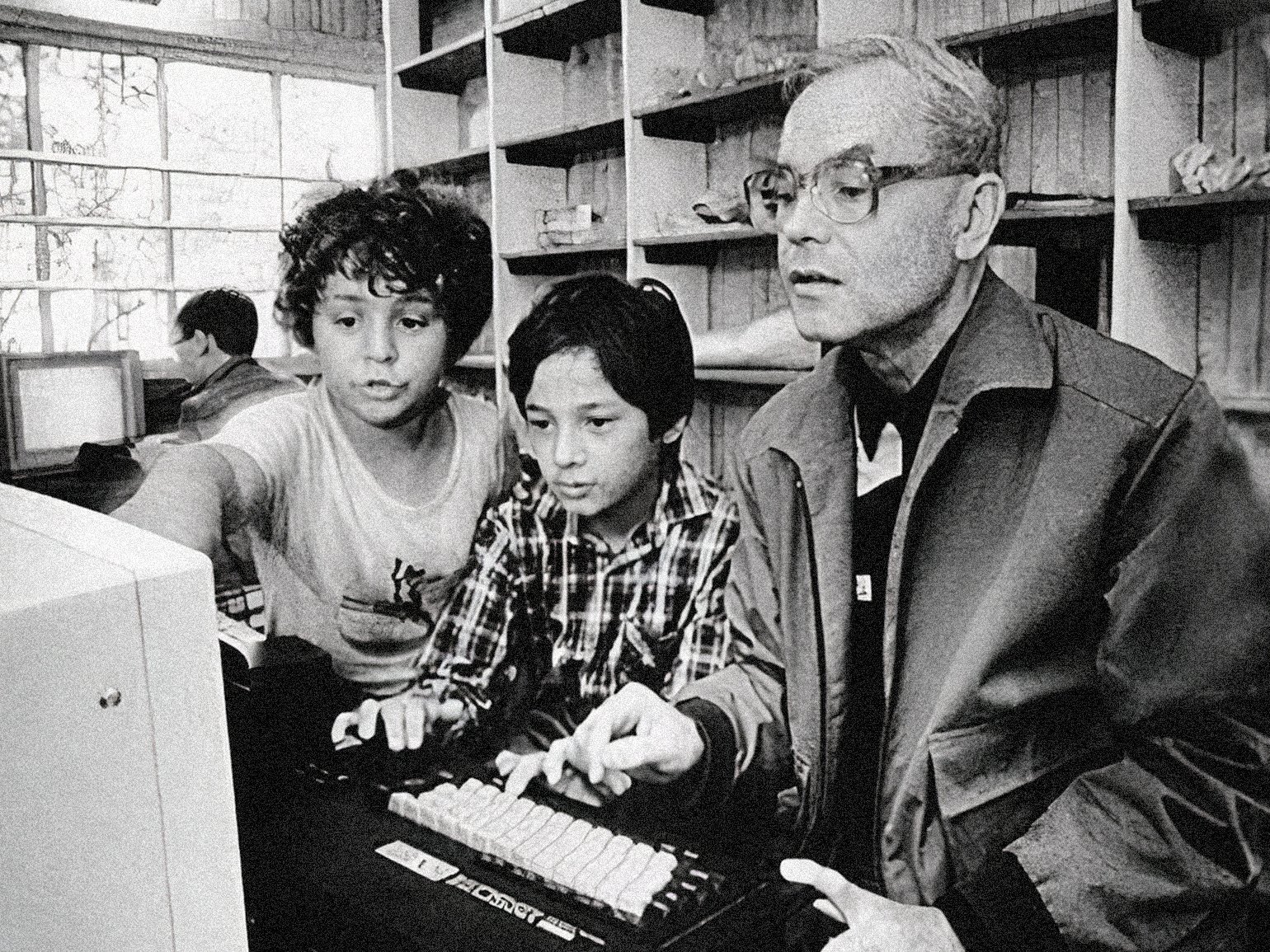
Andrei Yershov
His works on programming technologies laid the foundation for the development of this field in the country. For instance, he was the first to introduce a number of terms, approaches, and methods that became classic for compiler theory, while the book he published in 1958 became one of the world’s first monographs on programming automation. Donald Knuth, an esteemed American researcher and a Stanford University professor emeritus, considers Yershov to be the inventor of hashing.
Credit: wikipedia.org (public domain image)
Seems like AI can do anything these days – we’ve heard of neural networks that can draw, compose music, and write readable texts (think ChatGPT, Midjourney, and other algorithms that recently made the news). However, what’s more important is that AI can be used in various daily tasks to significantly simplify our lives. Algorithms don’t get tired or distracted, which makes them highly useful in complex industrial processes. ITMO PhD student Anna Litvintseva is engaged in one such project, where unsupervised machine learning is applied in industrial environments.
I am working on a computer vision module for an automated machine learning framework. In this project, we are employing and testing a number of interesting concepts suggested by researchers from all over the world. One such concept is structural optimization of neural networks. Currently, we are experimenting with singular value decomposition and training decomposed models. This approach has a number of advantages: a smaller module volume, resistance to overfitting, and increased interpretability.
Our framework is already capable of handling two types of computer vision tasks: image classification and object identification. Apart from this, we’ve also implemented two structuring approaches, which allows us to use smaller neural networks and less powerful computers.
Our framework is already capable of handling two types of computer vision tasks: image classification and object identification. Apart from this, we’ve also implemented two structuring approaches, which allows us to use smaller neural networks and less powerful computers.
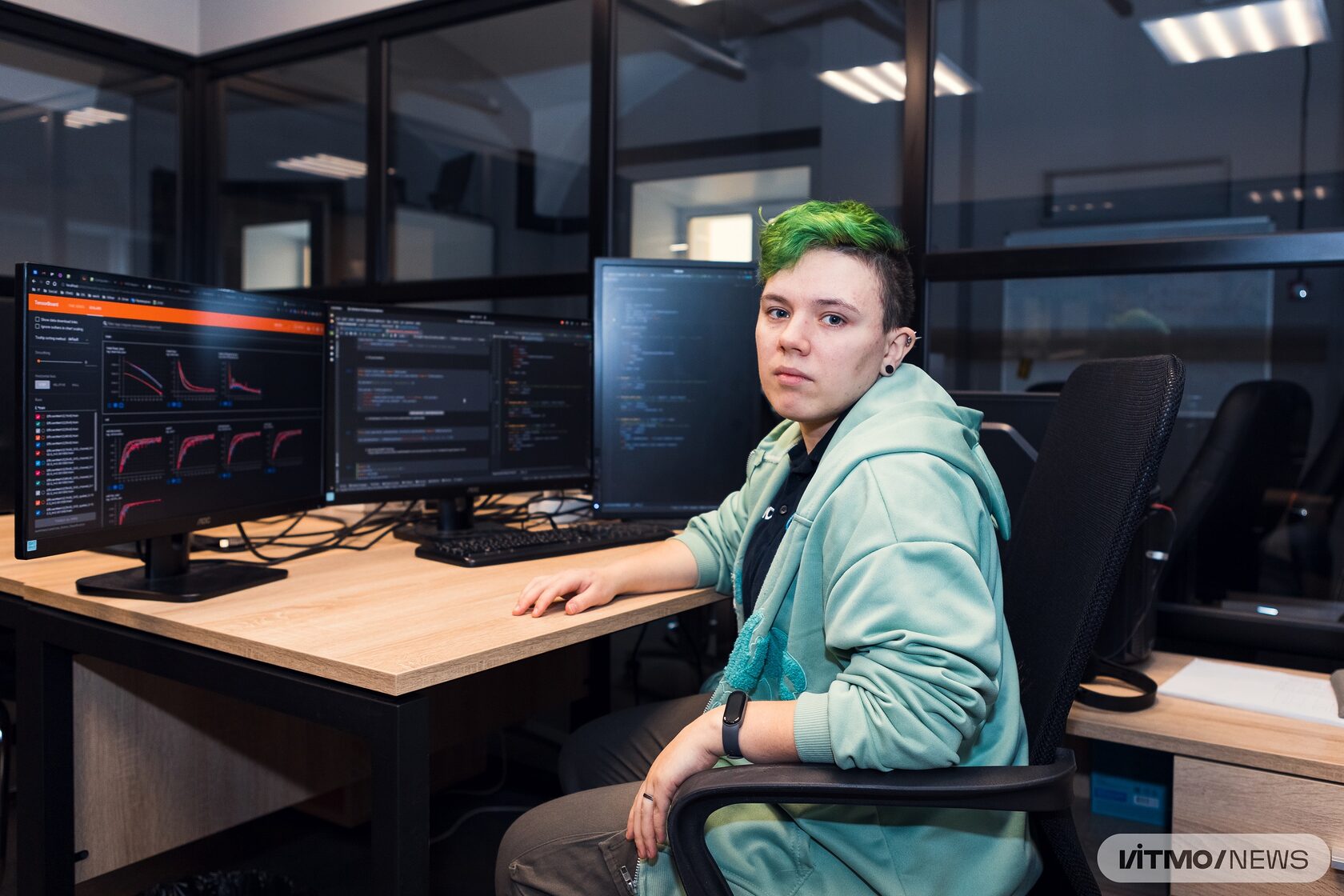
Anna Litvintseva,
A PhD student at the Faculty of Digital Transformation
A PhD student at the Faculty of Digital Transformation
Preventing accidents is much cheaper than dealing with the problems they cause. Moreover, any disruptions in production result in lost revenue for any company. Automated analysis of industrial data allows us to more efficiently identify defective and worn out equipment. Thanks to this, we can tend to it in a timely manner without any emergency disruptions in the production process.
Moreover, automated machine learning will make it possible for non-specialized companies to make use of complex technologies without employing IT professionals.
Moreover, automated machine learning will make it possible for non-specialized companies to make use of complex technologies without employing IT professionals.
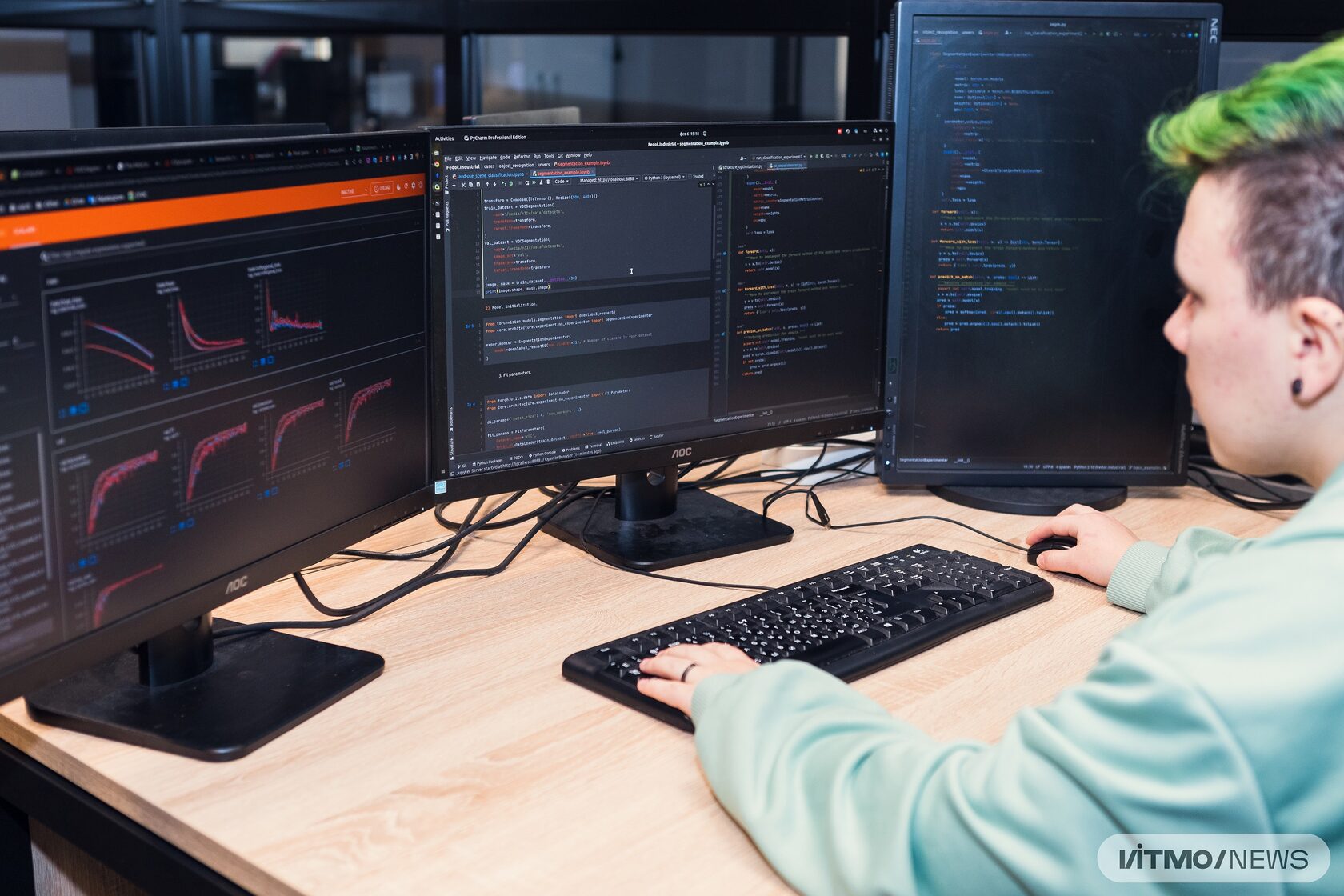
We hope that our project will address various industrial tasks, such as detecting surface defects and anomalies – scratches, contamination, corrosion, soot, or oil stains – a total of over 30 kinds of defects. By correctly classifying them, we will be able to quickly identify their causes and improve the production process.
I am inspired by current developments in AI. These days, algorithms can play complex games better than humans, generate incredible images, and write a piece of good amateur-level code – and this is not the limit. As a scientist, I am hoping to contribute to the development of strong AI.
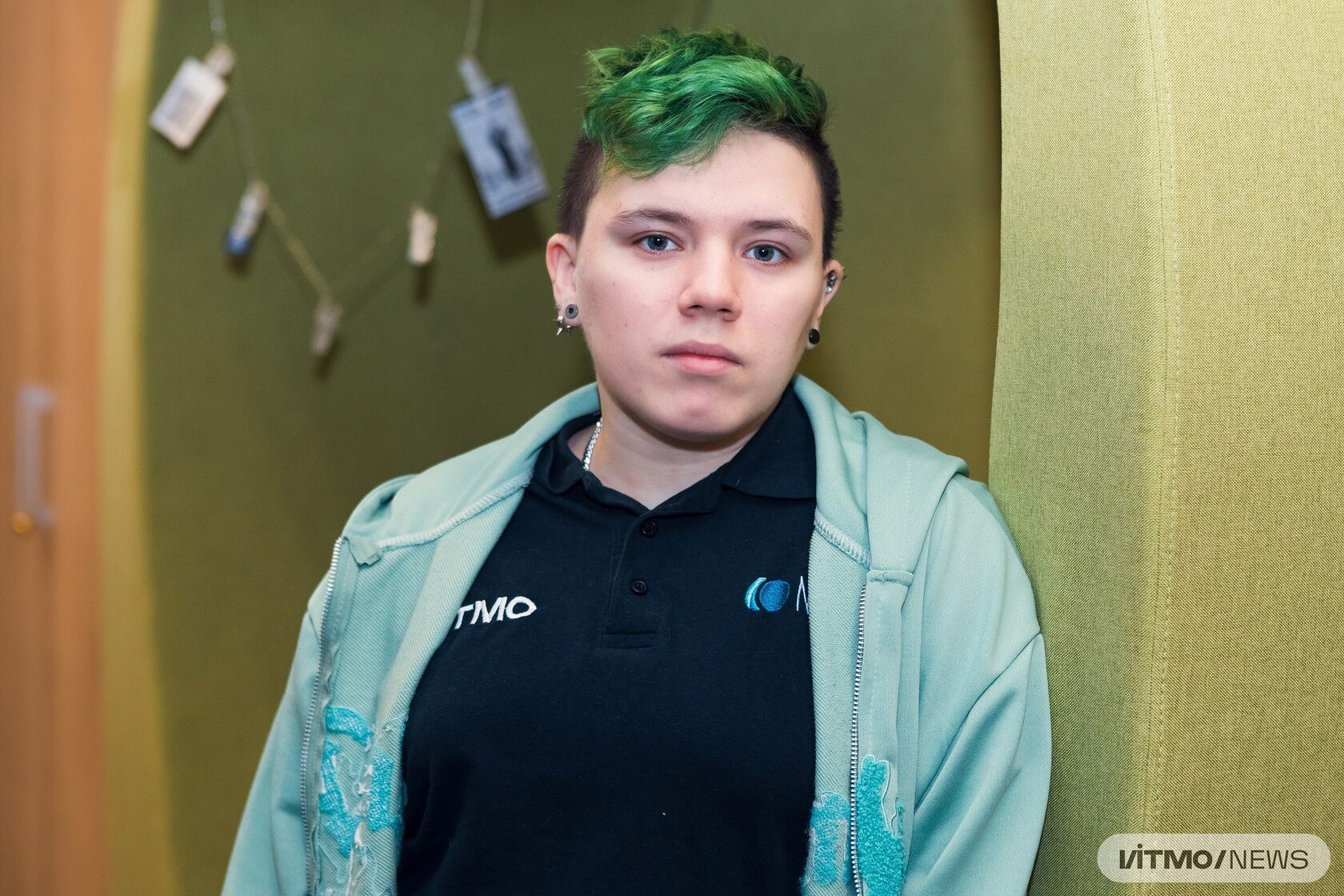
PROSTHESES AND DEVICES FOR PEOPLE WITH DISABILITIES
The groundwork for prosthetics was laid in Ancient Egypt by the creators of primitive devices made out of fabric. Later, in the Middle Ages, came more complex designs.
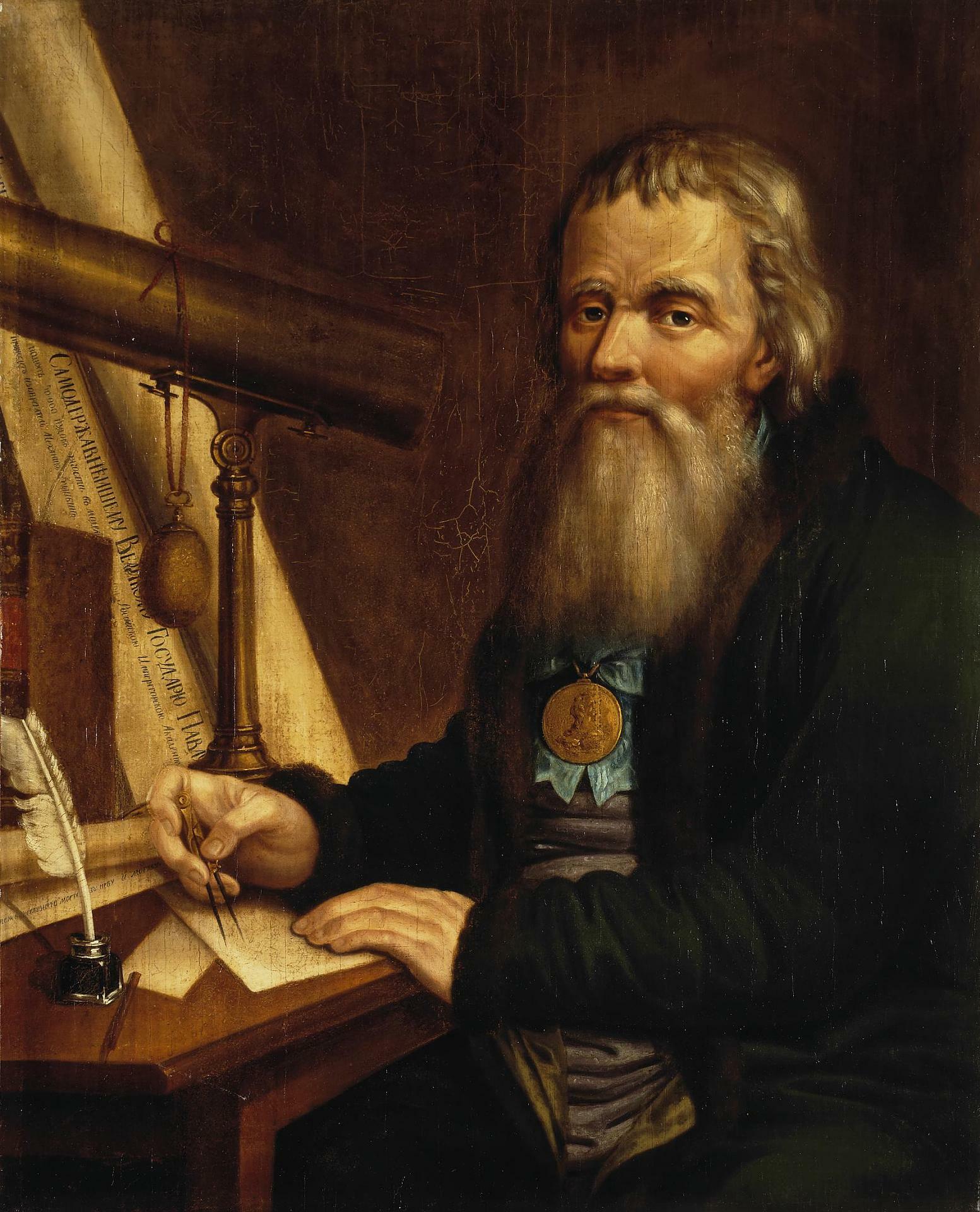
A portrait of Ivan Kulibin by Petr Vedenetsky, The State Hermitage Museum.
The prolific engineer Ivan Kulibin can rightfully be called the inventor of the first mechanical prosthesis in Russia. In 1791, he developed mechanical legs for an amputee. Naturally, he wasn’t the first to try and design an artificial leg, but the first to succeed in creating something more functional. The user of his prosthesis, made from metal and wood, could comfortably walk, sit, and even dance the polka, as a Moscow newspaper reported in 1854.
Credit: wikipedia.org (public domain image)
These days, there are two types of prostheses, both resembling the missing limbs not only in appearance, but also functionally. Active prostheses move thanks to special cables inside them and are fully dependent on the movement of the person wearing them; in other words, they don’t contain any electronics. Bionic prostheses, on the other hand, are robotized, which is why they are said to be the future of the field. The Russian company Motorica, founded by ITMO alumni Ilya Chekh, is developing such prosthetics. Artem Meinov, a current student of the university, has designed another kind of prosthesis: its function is to help people with cerebral palsy or those recovering from a stroke restore the mobility of their limbs.
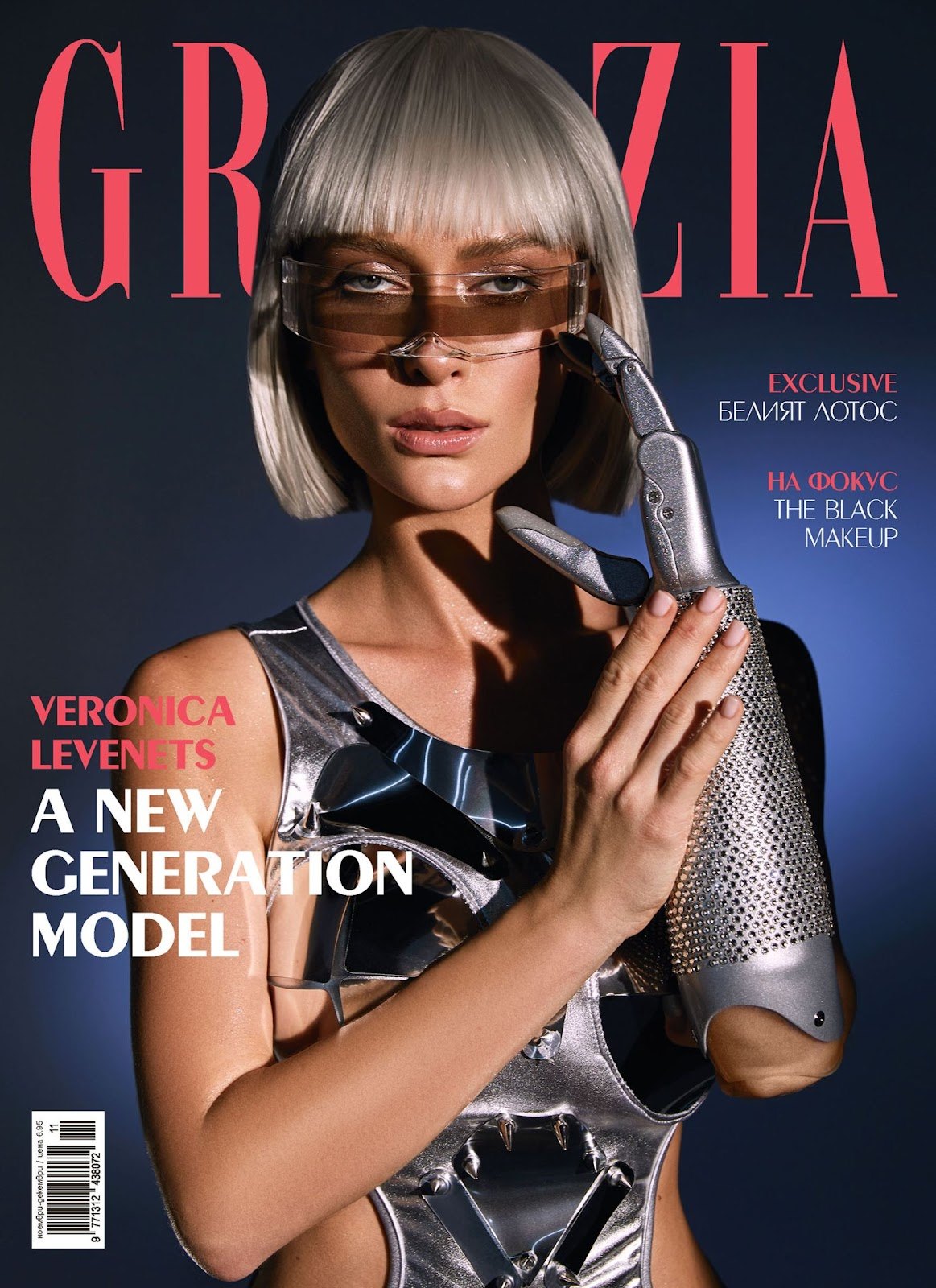
Veronika Levenets, the first Russian model with a bionic hand prosthesis (developed by Motorica), graced the December 2022 issue of Grazia Bulgaria magazine. Credit: Motorica
My prosthesis is meant for people with different motor disorders, such as those acquired after a stroke or common in cerebral palsy. The device will help in developing joint mobility and preventing muscular dystrophy, and you can use it both to complement professional physical therapy or at home. You just put it on your arm and the inbuilt servo motor activates the mechanism that helps you bend your elbow with the given velocity and to reach a given angle. All of these parameters can be tailored individually for every patient.
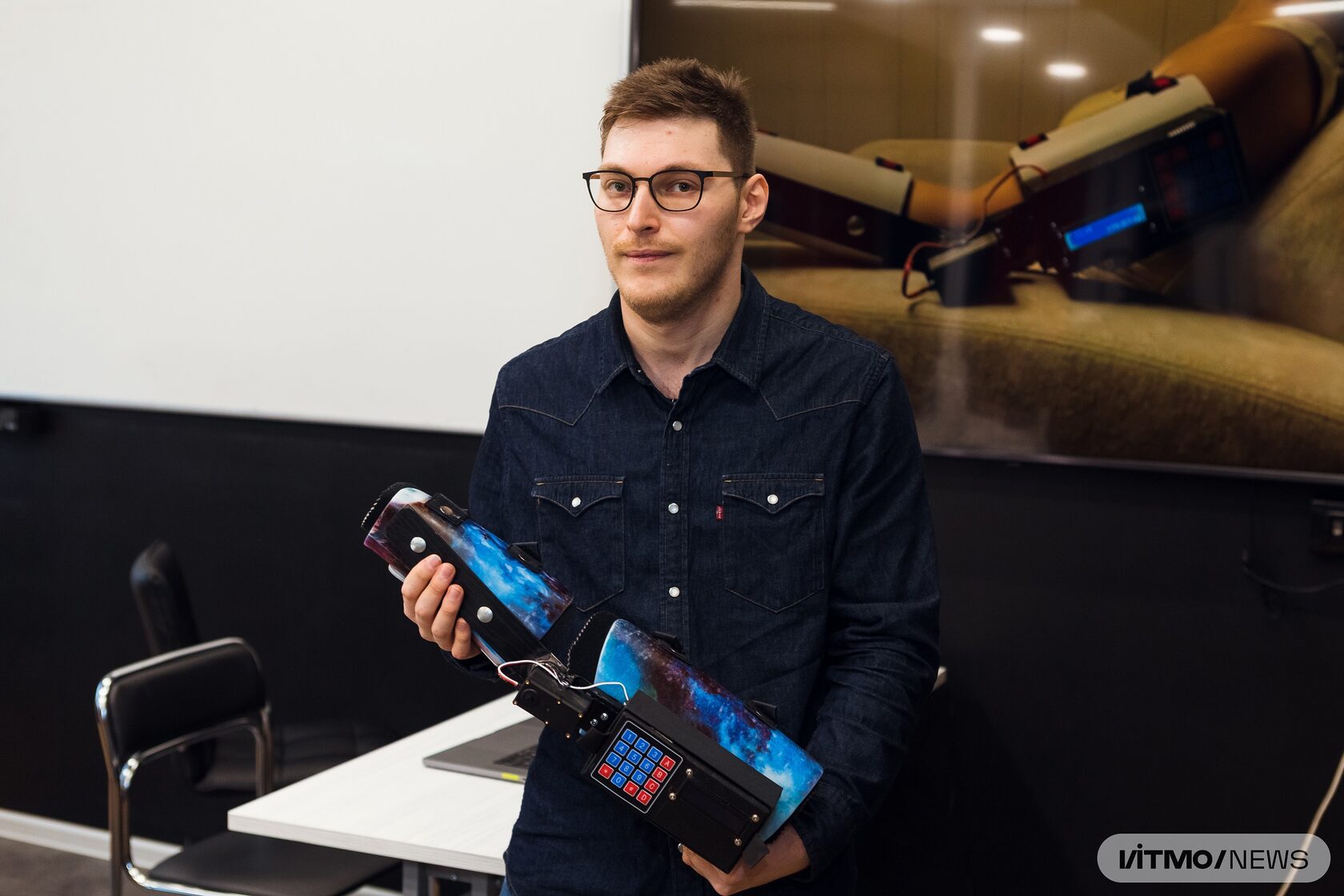
Artem Meinov,
A PhD student at the Faculty of Software Engineering and Computer Systems
A PhD student at the Faculty of Software Engineering and Computer Systems
There are several existing alternatives produced abroad, but they have their drawbacks. Firstly, not all of them are available in Russia, and those that can be purchased here tend to be expensive. Moreover, they are bulky, not really user-friendly, and stationary. On the contrary, my device is compact, wearable, and can be conveniently used at home. Any user can set the desired parameters, such as training time, velocity, and bending angle. As a bonus, it activates the arm specifically, instead of the whole body, which makes it more efficient.
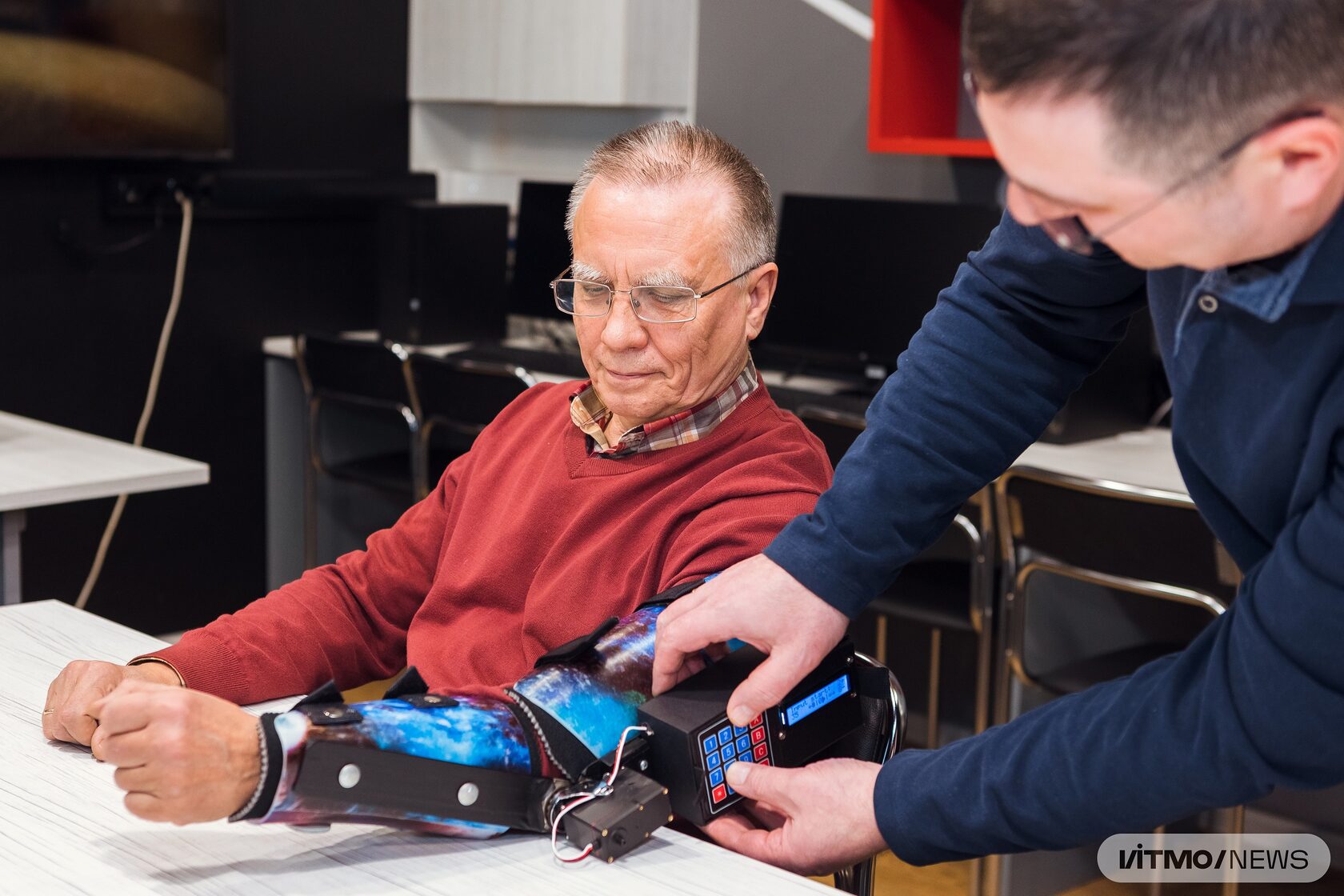
Currently, I have the third version of the prosthesis ready. I am also working on a similar device for the wrist and fingers. Later on, it will be possible to adapt it to train leg muscles and joints. Now I am experimenting with parts and materials, aiming to cut down on the market price for the prosthesis. Even though right now it’s a little early to talk about mass production, I have already presented my design at several conferences, where a number of companies showed their interest in it. In the future, I would like to register it as a medical device so that I can have a greater control over its quality (to ensure, for instance, that it is made only with hypoallergenic materials).
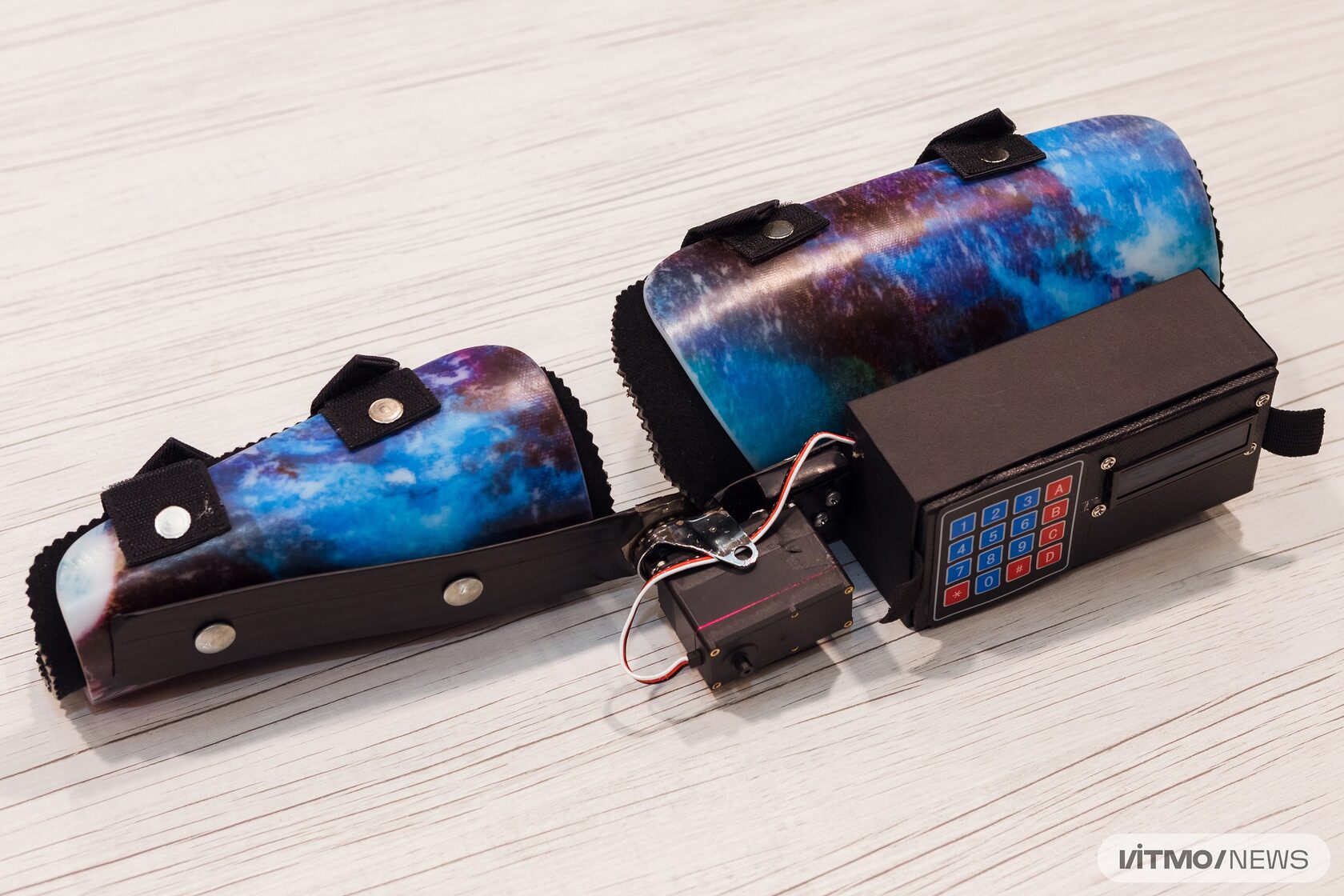
I do research because I want to see some feasible results, not only in theory but in practice. I live with cerebral palsy, so I know the needs of people with motor disabilities well. That’s why I am making a product that will help them get over the challenges they face. As for role models, mine is Stephen Hawking – – he has always inspired me to act and keep going.
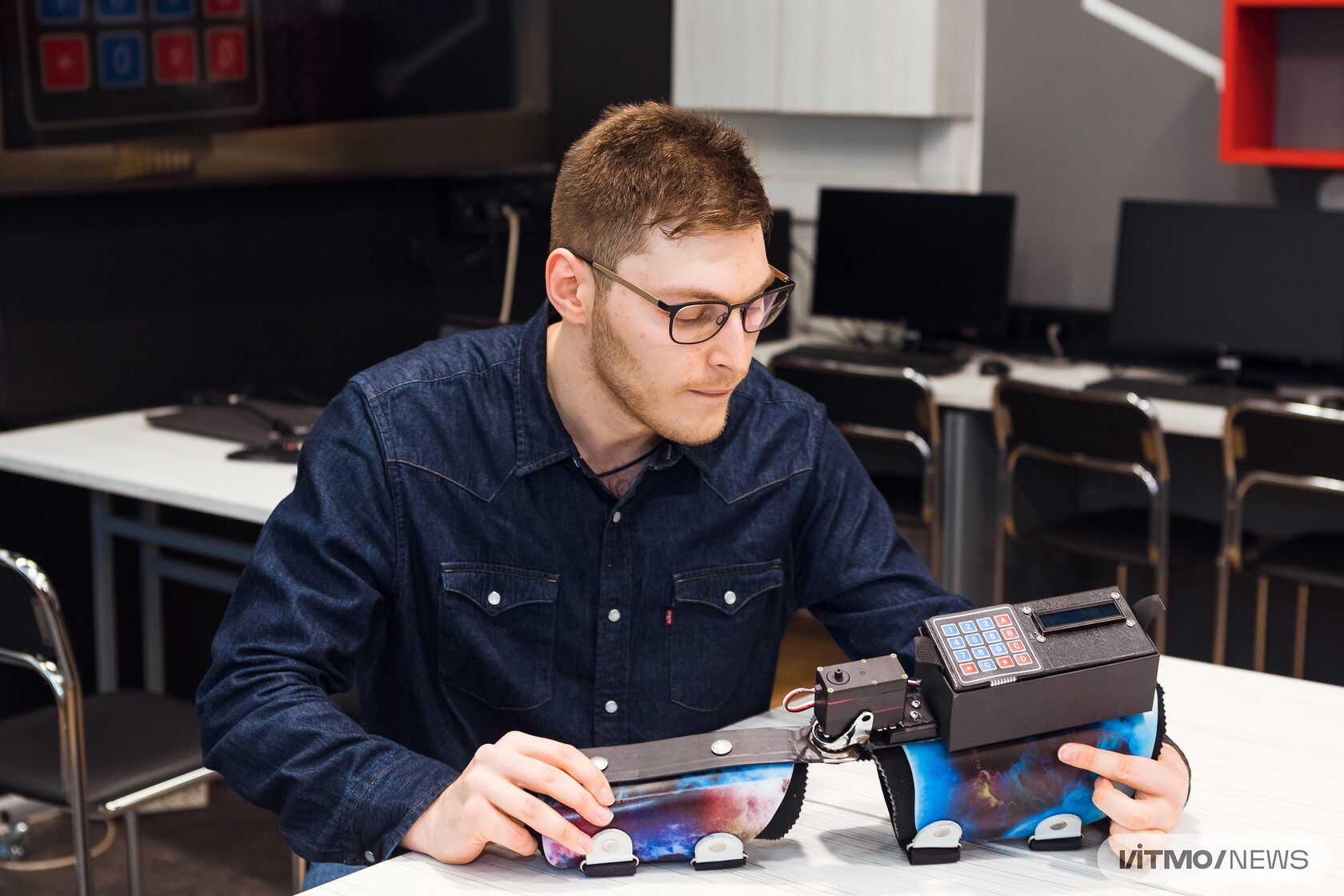
CANCER DIAGNOSTICS AND TREATMENT
Cancer is one of the leading causes of death today, with nearly 10 million deaths or one in six deaths in 2020 being attributed to cancer. Scientists around the world have long sought to explain what causes changes in the DNA molecules and, most importantly, how they can be treated. Among the most influential Russian researchers in this field are Soviet surgeons Pyotr Herzen and Nikolay Blokhin, as well as Ilya Mechnikov, Nikolay Gamaleya, and Lev Zilber most renowned for their achievements in experimental oncology and the virogenetic theory of cancer origin.
Even before them, researchers tried to inject tumor cells into animals to test out various treatment methods. For instance, veterinarian Mstislav Novinskiy successfully transplanted tumors from dogs to puppies back in the 19th century, thus identifying a mutant strain that causes malignant tumors. His discovery laid the foundations for experimental oncology worldwide.
Another bright mind, Nikolay Petrov, the surgeon considered to be the founding father of oncology in Russia, is forever in the annals of history as the founder of the first research institute of oncology in St. Petersburg. He also authored the first-ever scientific monograph on tumors and a number of popular science booklets on cancer prevention and treatment in Russia.

Credit: Petrov Research Institute of Oncology / niioncologii.ru
The 21st century is the age of molecular medicine, oncogenetics, and immunology. In recent years, researchers have been placing high hopes on biological methods that throw light on oncogenes (genes involved in tumor progression) and tumor suppressor genes (genes engaged in the prevention of tumors). However, they are still on the lookout for new methods for cancer diagnostics and treatment. Thus, for instance, scientists from ITMO have developed a more efficient approach to treating melanoma using gold nanoparticles. Their colleagues were the first to propose a binary antisense agent, which allows scientists to target cancer cells without harming the healthy ones. And Valeriia Drozd’s team of first-year PhD students have designed a DNA nanobot that immediately starts the treatment once it identifies tumor cells.


We strive to improve the existing methods of gene therapy to reduce the activity of cancer genes in cells. As a rule, oncotheraphy specialists target exclusively disease-associated genes in order to avoid destroying other cells. However, the issue is, these genes are already broken and they continue to divide and multiply rapidly and uncontrollably – unless something is done to control them.
Valeriia Drozd,
A first-year PhD student at ITMO’s ChemBio Cluster
A first-year PhD student at ITMO’s ChemBio Cluster
Our goal is to come up with a solution that can be used to target all genes. Notably, these genes should be active in a body cell and responsible for its functioning, so that if knocked out, they will cause the cell’s death. This approach will make it possible to fight cancer with minimal resources and a reduced drug load on patients.
That said, these genes will be prone to be affected in healthy cells, as well. Hence, we’re working on a DNA nanobot that can independently activate a therapeutic response only upon detection of biomarkers, aka mutated genes.

Slowly but surely, we’re getting towards successfully testing the technology on cancer cell lines. The project has been on for five years but I joined it only a year and a half ago. But even so, together we're just now steps away from proving our hypothesis at a cellular level.
Our project will pave the way for personalized cancer treatment, which will let each patient receive a specific cure – and potentially a tailor-made DNA robot – taking into account the genetic profile of their cells, the detected mutations, and the effects of medications.
Our project will pave the way for personalized cancer treatment, which will let each patient receive a specific cure – and potentially a tailor-made DNA robot – taking into account the genetic profile of their cells, the detected mutations, and the effects of medications.
I’ve been into arts since I was a kid and I have always had lots of hobbies and interests. However, when I was in high school, I developed an interest in human anatomy. I was curious about how we can affect our health, what healthy do’s and don'ts are, and which habits can make us feel better. As I couldn’t find anything trusted online, I decided to sort it out for myself and devoted my life to biology.

With science, I gained a unique worldview, as well as learned to see the big picture and notice deep interconnections in the world. It was a revelation for me when I realized that science is a form of art and I don’t need to give up on my hobbies and struggle to balance my job and other interests my whole life. I’m lucky to have brought art to my field and now I get to do what I love.
3D-PRINTED ORGANS AND NEW ADVANCES IN TRANSPLANTATION
History witnessed thousands of attempts to transplant organs and tissues. Though the first mentions of such procedures occur as early as the Classical Antiquity, the possibility of transplanting organs with keeping a natural blood supply was demonstrated much later on by France-born surgeon Alexis Carrel, who was awarded the Nobel Prize in Physiology or Medicine in 1912 for pioneering vascular suturing techniques. In Russia, Vladimir Demikhov is rightfully considered one of the fathers of transplantation.
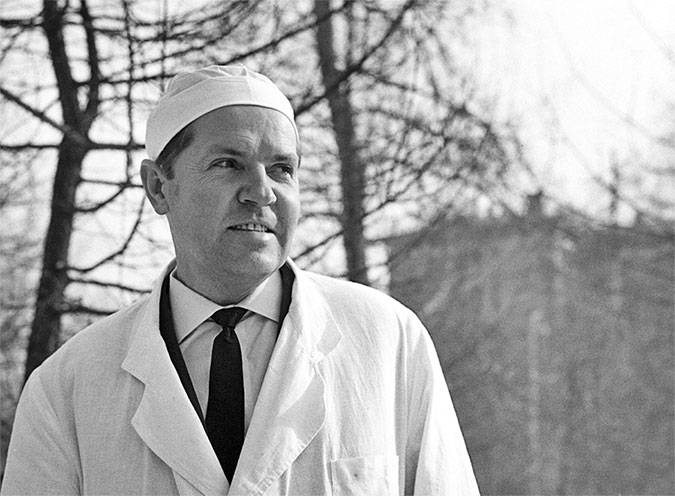
Vladimir Demikhov
Credit: V. P. Demikov City Hospital / demikhova.ru
Vladimir Demikhov created the first artificial heart in 1937 when he was still a student. After the war ended, he performed heart-lung transplantation on a dog. And in 1952, he became the first to develop and implement successful coronary bypass surgery. Later, he was able to perform a heart transplant for a dog
Published in 1960, his book Experimental Transplantation of Vital Organs was considered the first monograph on the subject. His title of “the father of transplantation” comes from Christiaan Barnard, a cardiac surgeon who pioneered human-to-human heart transplantation.
Tens of thousands of transplant operations are performed in the world annually, with thousands of people still on the waiting list. With donor organs falling short, one of the ways out is bioprinting. Producing prosthetics with 3D printing has proved to be an incredible alternative to donor organs. In Spain, for instance, a patient suffering from sarcoma successfully received a 3D-printed ribs transplant. Let's hear from Victoria Egorova on ITMO's advances in bioprinting.

My project is aimed at creating a hydrogel implant for treating cartilage defects, which occur due to injuries, overweight, etc. To regenerate the hyaline cartilage, we build implants using a 3D printer that can create implants of specific structures that will come in handy in a range of fields, such as the regeneration and transplation of bones, skin, blood vessels, and other organs and tissues.

Victoria Egorova
A Master’s student at ITMO’s ChemBio Cluster and a research engineer
A Master’s student at ITMO’s ChemBio Cluster and a research engineer
The implants are produced using bioink made of human cell cultures and a gel that mimics the extracellular matrix (a cell’s natural environment). Our approach lets us automate the process entirely, thus breaking into mass production. It also assures sterility and breaks ground for personalized medicine by adjusting the mechanical properties and structures of the implants for each patient.
The study is conducted in collaboration with the Russian Scientific Research Institute of Traumatology and Orthopedics named after R.R. Vreden and is led by Elena Krivoshapkina, DSc, the head of the laboratory specializing in applied materials for the energy sector.
At the Laboratory for 3D Printing of Functional Nanomaterials, we already know how to produce materials with desired properties and even printed implants. Next, we plan to insert a 3D-printed implant into a rabbit with a pre-engineered injury of the hyaline cartilage.
In the future, such implants may be widely applied to damaged articular surfaces in humans. Bioprinitng, broadly speaking, can become a solution to the lack of donor organs and tissues for transplantation by fabricating full-functional alternatives, even if it’s a heart, a kidney, or a liver.
In the future, such implants may be widely applied to damaged articular surfaces in humans. Bioprinitng, broadly speaking, can become a solution to the lack of donor organs and tissues for transplantation by fabricating full-functional alternatives, even if it’s a heart, a kidney, or a liver.
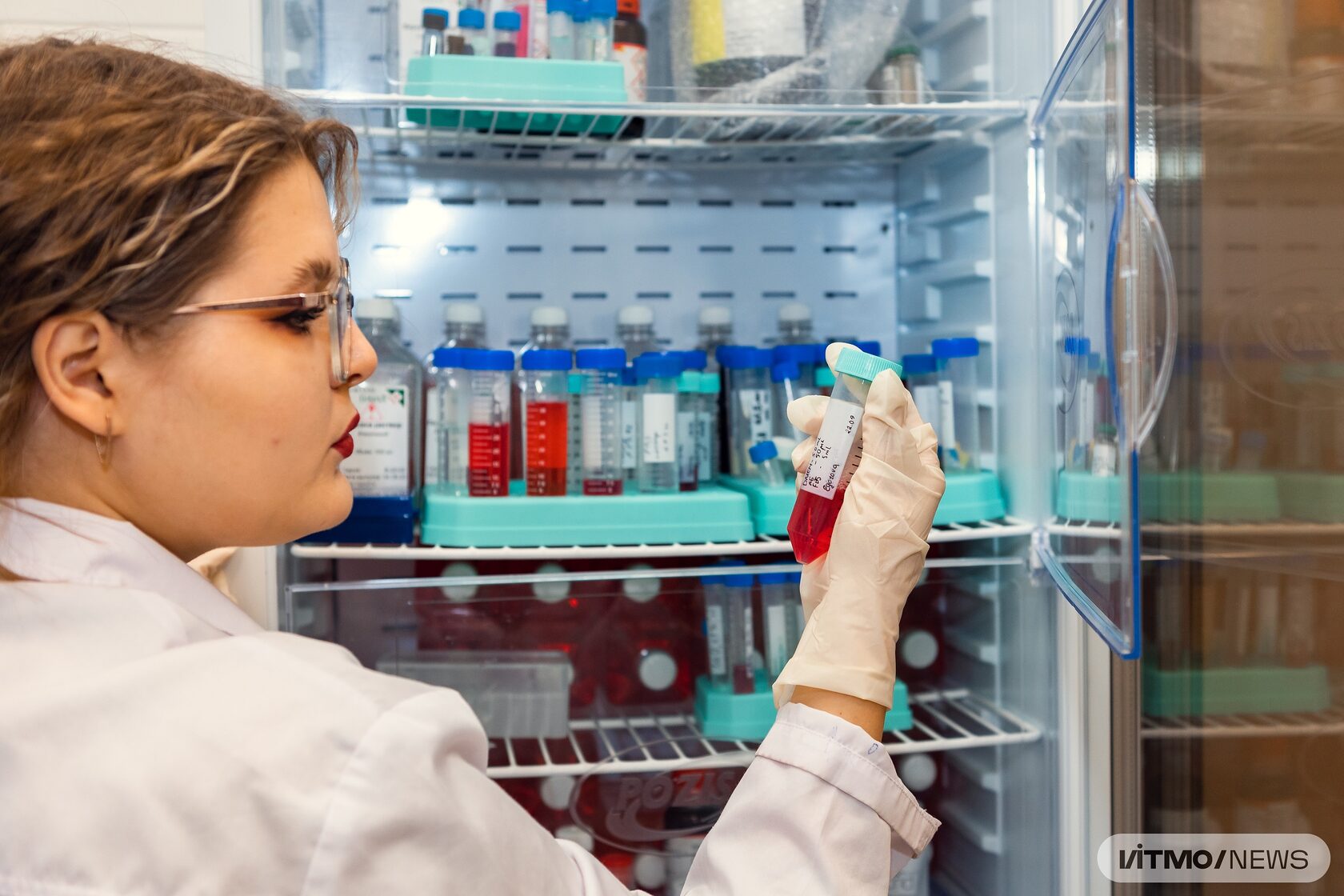
I chose 3D bioprinting because I love dealing with complex living objects (eukaryotic cells) and combining the incompatible (3D printing and living cells). Another thing that motivates me is that the fruit of our hard work is potentially a replicable and promising technology.
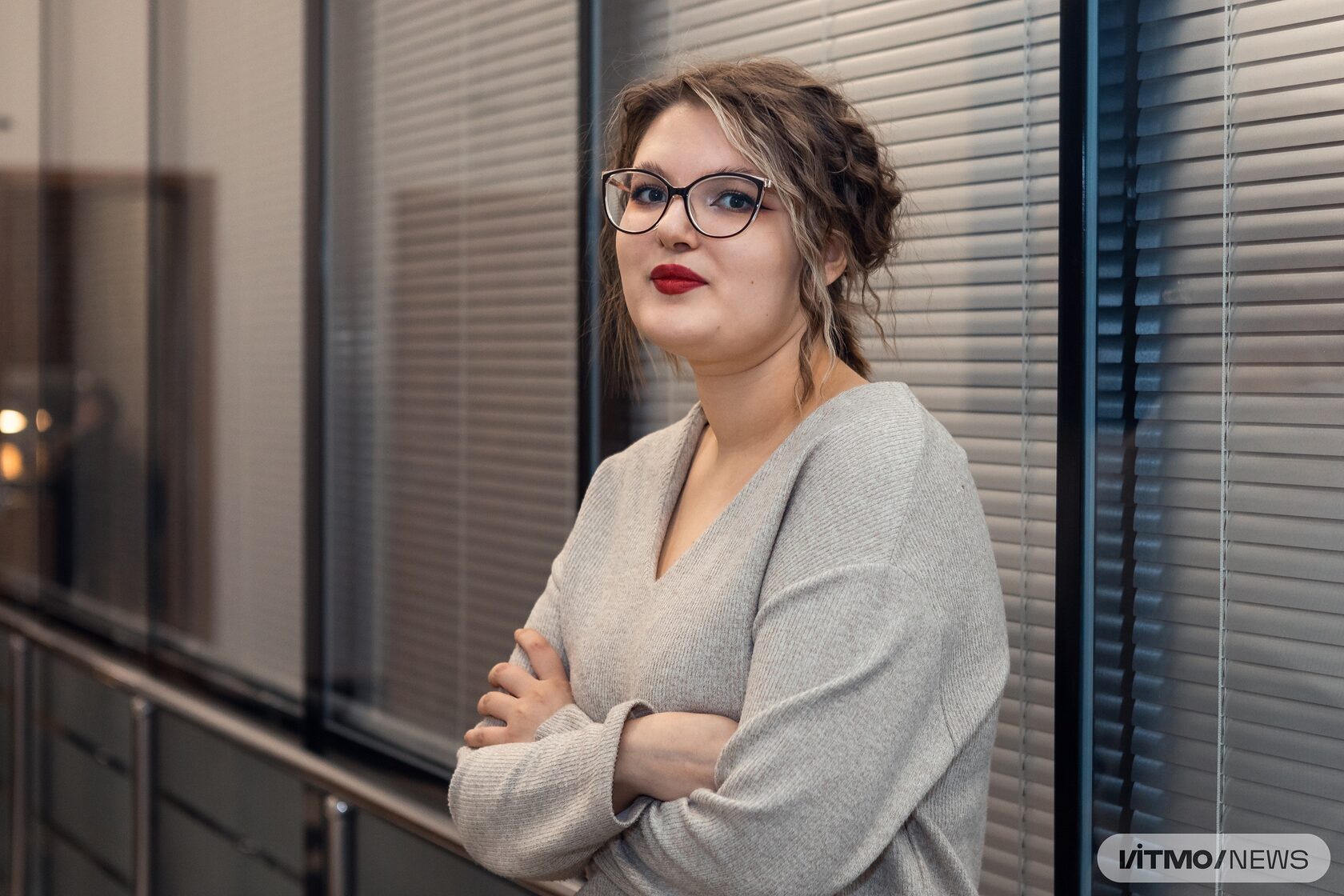
I got into science because of Marie Curie, the first woman who received a Nobel Prize in Physics and Chemistry. She was my role model back when I was only a Bachelor’s student. I also admire Nikolai Vavilov, a Soviet researcher and geneticist who made eminent achievements in botany. Still, despite all charges, arrests, and bans on leaving the country for scientific events, the scientist carried on with his research and demonstrated the importance of systemizing knowledge about genetics.
Creators:
Text by: Elizaveta Kokorina, Alena Mamaeva, Ekaterina Shevyreva
Editor: Elena Menshikova
Photos: Dmitry Grigoryev / ITMO.NEWS
Images: photogenica.ru, www.pngwing.com
Layout: Ekaterina Shevyreva
Translation by: Vadim Galimov, Marina Belyaeva, Catherine Zavodova
Text by: Elizaveta Kokorina, Alena Mamaeva, Ekaterina Shevyreva
Editor: Elena Menshikova
Photos: Dmitry Grigoryev / ITMO.NEWS
Images: photogenica.ru, www.pngwing.com
Layout: Ekaterina Shevyreva
Translation by: Vadim Galimov, Marina Belyaeva, Catherine Zavodova

